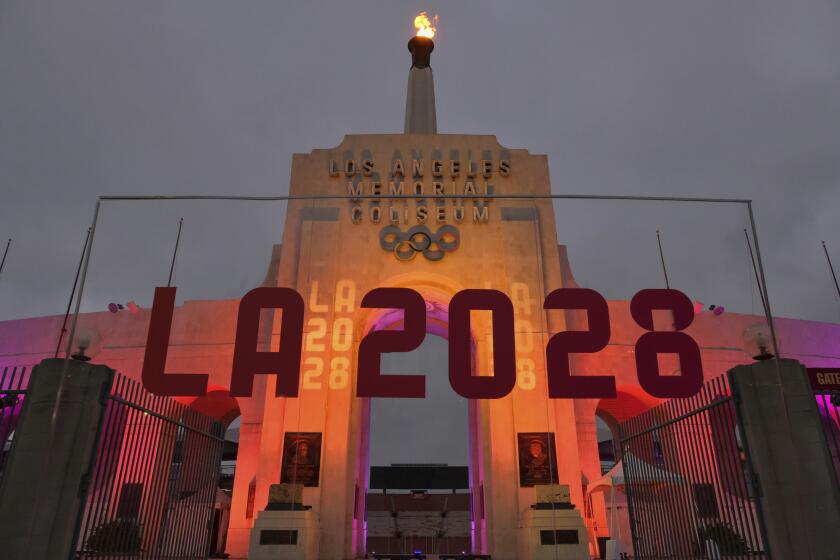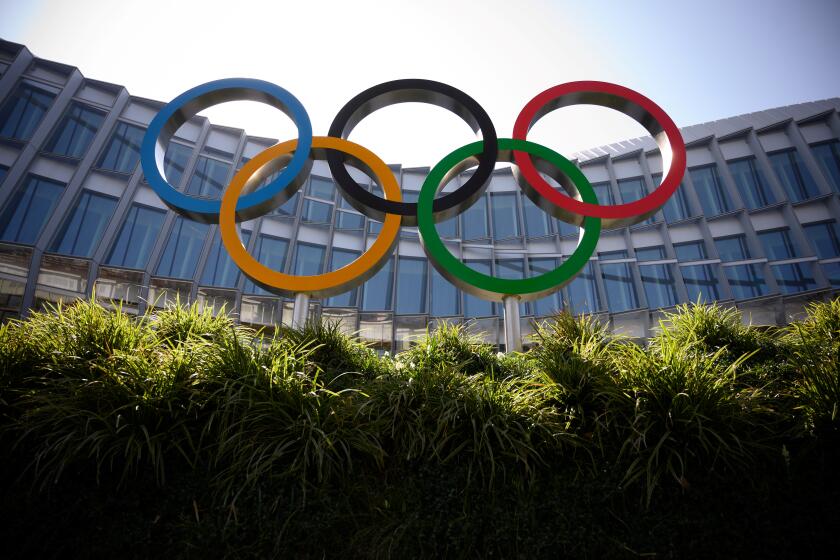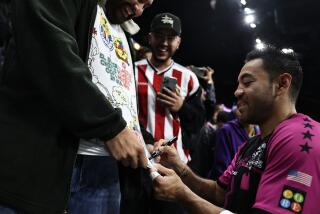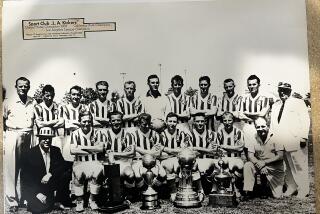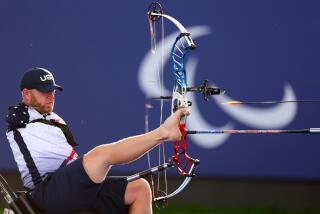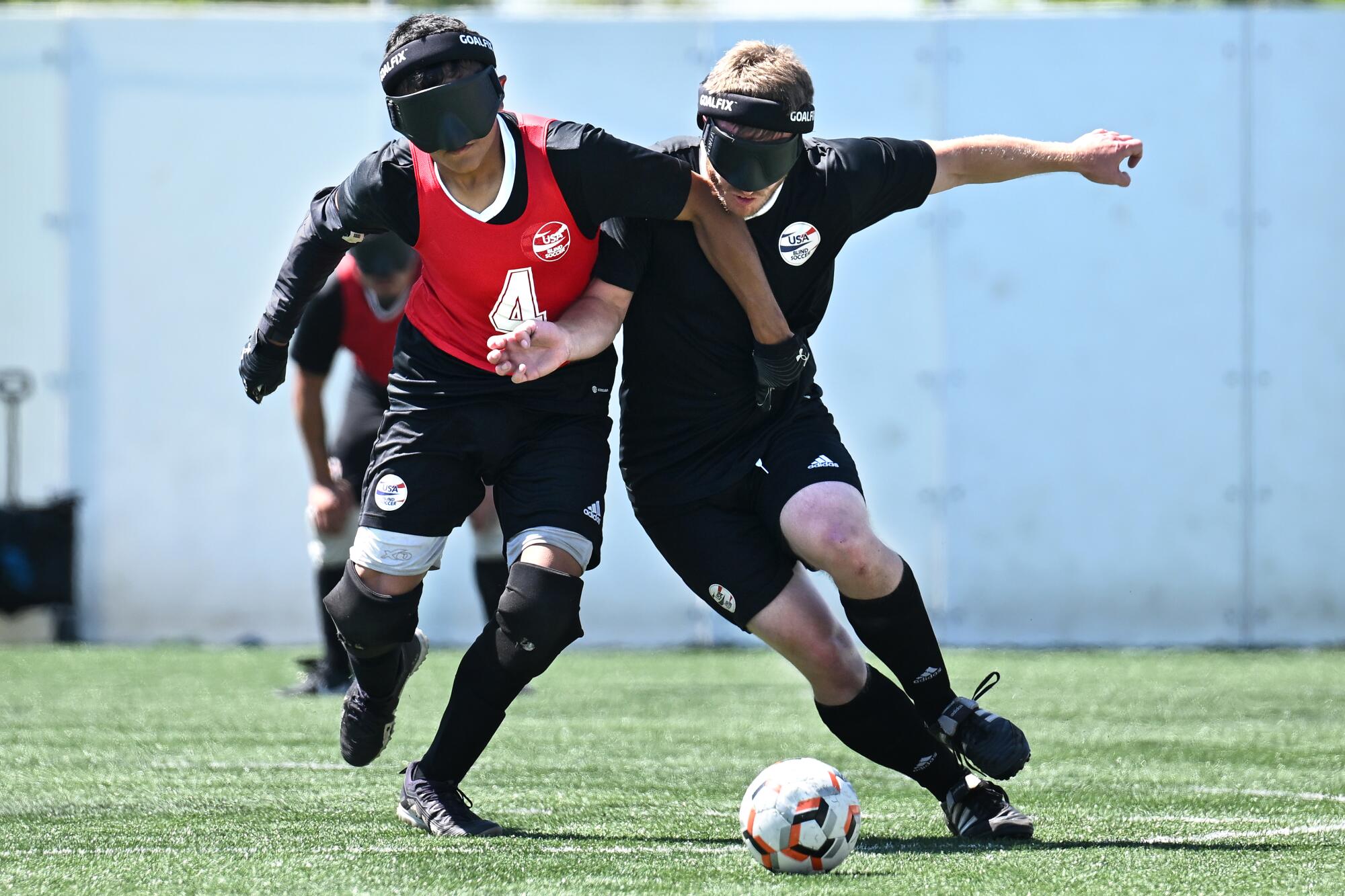
David Brown hears the ball. As it rolls across the soccer pitch, it contains rattles that make the crunching sound of soldiers marching through a sand pit. He moves toward the ball and responds with measured steps when a coach yells, “left, left.”
The ball strikes Brown squarely on the calf. He listens, finds the ball and ping-pongs it between his feet before giving it a swift kick. The attack on goal is averted and his teammates begin an assault of their own.
Brown is a center back on the United States Blind Soccer team, assembled only a few months ago with gold medal dreams and a five-year timetable ahead of the Los Angeles Olympics and Paralympics in 2028.
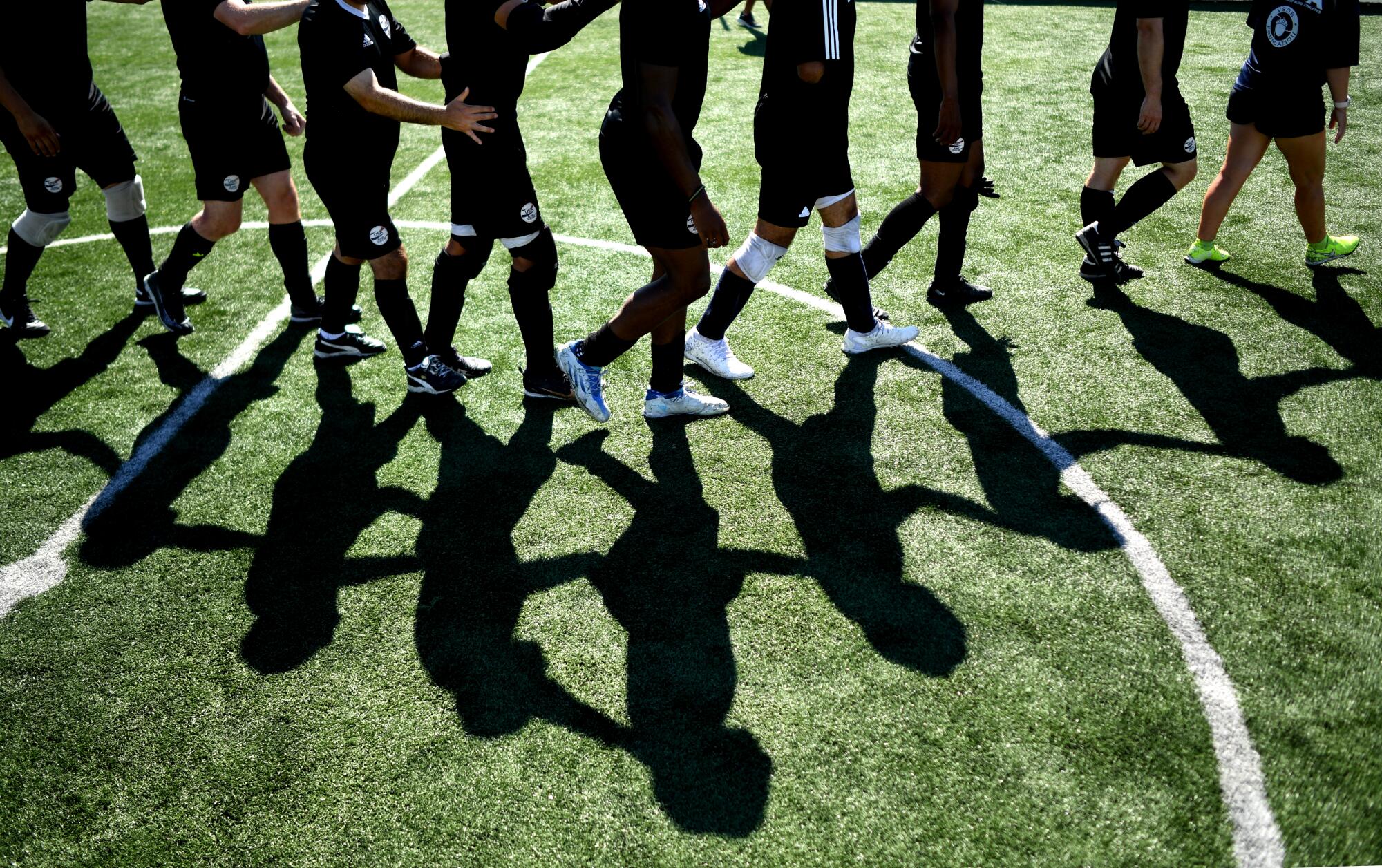
He and teammate Antoine Craig already are Paralympic track and field stars, the fastest visually impaired sprinters in the U.S. They were excited to shift to soccer, intrigued by its tactical challenges and warmed by the camaraderie among teammates.
A gold medal winner in the 100 meters at the Rio Paralympics in 2016, Brown brings an unbridled competitive spirit and sense of urgency to this fledgling U.S. sport.
The L.A. 2028 Olympics will be held July 14-30, organizers announce. Paralympics will begin Aug. 15. IOC likes the ‘progress and creativity’ of L.A.’s bid.
The U.S. is assured a berth in the eight-team 2028 Paralympics soccer bracket because it is the host. That’s not enough for Brown.
“The automatic bid, that’s what inspired creating the team but that’s not our narrative,” he said. “People say we have five years to prepare and that’s true. But I’ve been through several four-year cycles in track and field. The time goes by fast.
“I don’t want us to go out there and look like garbage. I want us to make people shake in their boots.”
Spectators are silent during a blind soccer match so players can hear instructions from guides stationed behind the goals and on the sidelines.
Cheers are allowed only when a goal is scored, and U.S. fans reacted four times in two victories over Canada in March. Fans of the Canadian team remained mum — the U.S. posted shutouts, 1-0 and 3-0.
Blind soccer — also called 5-a-side because each team has five players including a goalie — is played on a field 40 meters long and 20 meters wide. The pitch is lined with kickboards to prevent the ball from going out of play and signal to players that they are at the sidelines.
A player who rushes toward the ball must yell “voy!” — the Spanish word for “go!” — to inform his opponent that contact might be imminent. Playing too rough can be costly: a fifth foul results in an ejection. There are no throw-ins or offsides rule, reducing interruptions and resulting in a fast-paced game.
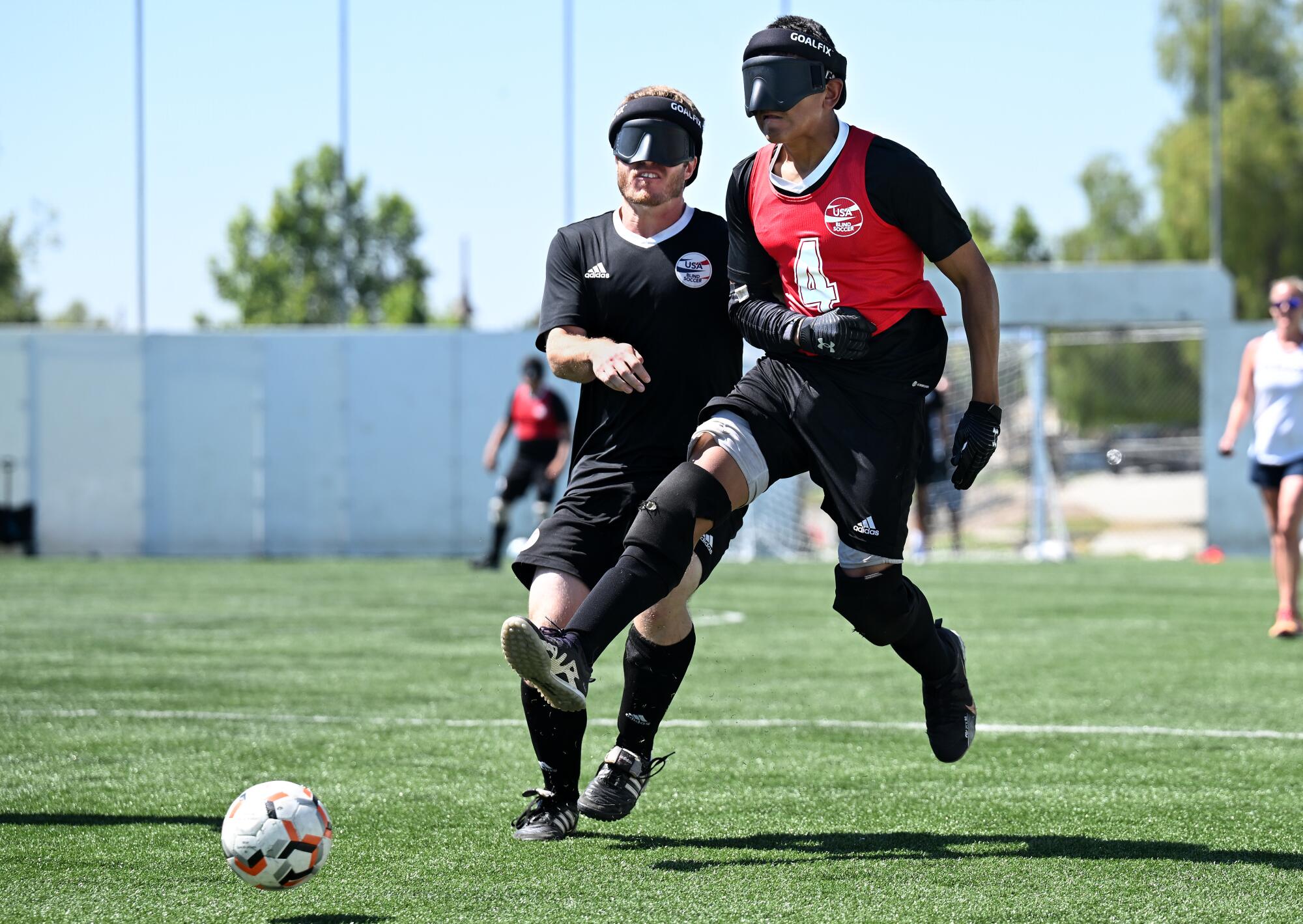
Each team’s four field players must be visually impaired, meaning they are completely blind or have very low visual acuity or no light perception. Nevertheless, all players except goalies wear eyeshades to ensure uniform blindness.
Goalies are sighted, primarily for safety reasons, and also serve as guides for the center back, whose job is to disrupt opposing attacks on goal. U.S. goalie Brandt Herron has earned Brown’s trust.
“He’s my eyes on positioning and where their players are so we can lock down on defense,” Brown said. “He’ll be like, ‘Yo, David, you are coming at an angle. You are outside the goal. The ball is loose, go left, left, right.’ He is steering me.”
As preparations continue for the 2028 Los Angeles Olympics, here are a few of the most pressing issues for L.A. residents and the answers we have.
Meanwhile, the opposing guide is standing behind the goal hollering instructions to his forwards. If the goalie moves to the right, the guide goes left and shouts so his player attempting a shot can aim for his voice.
Players talk throughout a game, announcing their intentions and placement so teammates can make accurate passes and avoid collisions. Every exhortation on the pitch is meaningful, and everyone in the stands cannot say a word.
“It’s strange at first,” said Craig, who is tapering back from sprinting to focus on soccer. “But you get used to it.”
Brazil has dominated blind soccer since it debuted as a Paralympic sport in 2004, winning gold at the Athens Games and every four years since. The team’s best player, Jeferson da Conceicao Goncalves, goes by Jefinho and is billed as the Paralympic Pelé. Videos of his deft dribbling, uncanny spatial awareness and scoring ability pepper social media.
David Clarke of Britain was an early star, scoring 128 goals in 144 international matches from 1994 until he retired in 2012 at age 42. He once spent a day teaching David Beckham to play blind football, as the sport is called in most of the world. Clarke was inducted into the English Football Hall of Fame in 2013 and currently is head of Paralympics Great Britain.
More than 60 countries field blind soccer teams, and international heavyweights include Argentina, China and France. The sport originated in Spain in the 1920s and Brazil developed the 5-a-side rules in the 1960s and held the first tournament in 1974.
“When I first lost my vision, I hated the fact that I didn’t have people to direct me and show me the way. I can help these kids become anything they want. If soccer is something they want to play, let’s get after it. That gives me a lot of joy.”
— Antoine Craig, a Paralympic soccer player who has been blind since 2010
All of which means the U.S. has some serious catching up to do.
The team trains in Chula Vista but players live all over the country, creating logistical challenges for Amanda Duke-Boulet, director of performance for the U.S. Assn. of Blind Athletes.
“It’s expensive to start and grow a sport at the grassroots level,” she said. “Then to ID athletes and make them world class, that’s also expensive.”
Yet soccer isn’t expensive to play. And because most Americans are familiar with the game, Duke-Boulet says she believes interest will spike in the visually impaired community.
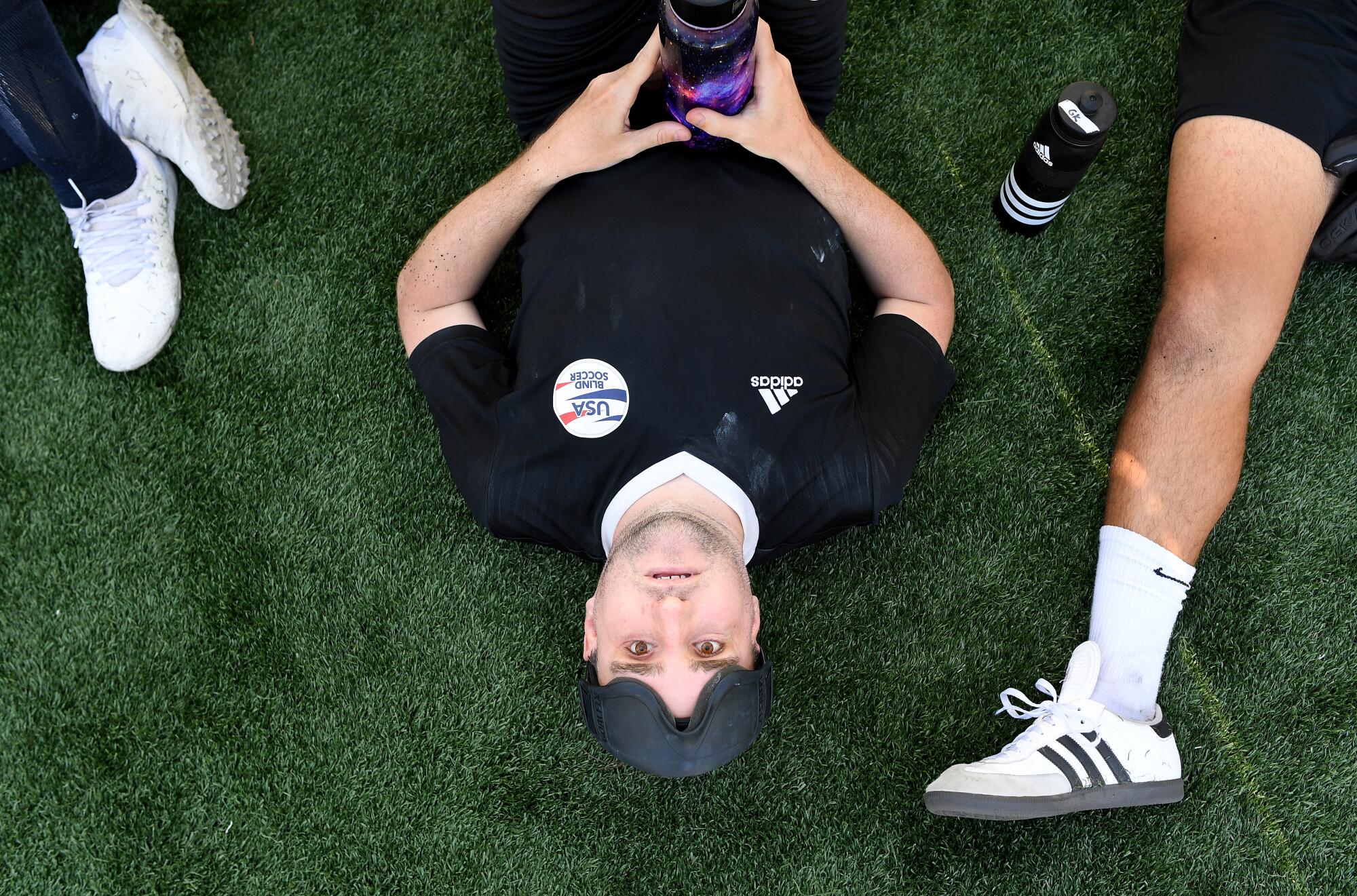
“All of a sudden you have kids and adults who say, ‘I have been waiting to play with peers,’” she said. “It can grow so fast. The number of people who want to play is insane.”
U.S. players such as Brown and Craig love the idea of spreading the word. Craig lives in Richmond, Va., but traveled to L.A. last week to help the national team stage a soccer clinic for visually impaired youths at USC as part of the Angel City Games, the blind leading the blind in the best possible way.
“When I first lost my vision, I hated the fact that I didn’t have people to direct me and show me the way,” said Craig, 41, who had a genetic disease that caused his retinas to break down over time. He lost his night vision as a teen and has been blind since 2010.
“I can help these kids become anything they want. If soccer is something they want to play, let’s get after it. That gives me a lot of joy.”
The U.S. national team coach is Katie Smith, a doctoral candidate in adaptive physical education at Ohio State and the only female head coach of a men’s blind soccer team in the world. Five years ago, Smith started a blind soccer program in Columbus, Ohio, that is now one of seven across the country boosted by funding from U.S. Soccer.
Los Angeles, through Angel City Sports, the largest adaptive sports program in the West, is another of the seven. The programs introduce visually impaired adults and children to the game while also enabling Smith to identify candidates for the national team.
“We stage clinics and weekly practices across those sites for a variety of athletes to come out and try it,” said Smith, who also holds the title of grassroots coordinator with the U.S. Assn. of Blind Athletes. “Plus, there are schools for the blind that participate in blind soccer. Already a pipeline of talent is starting to build.”
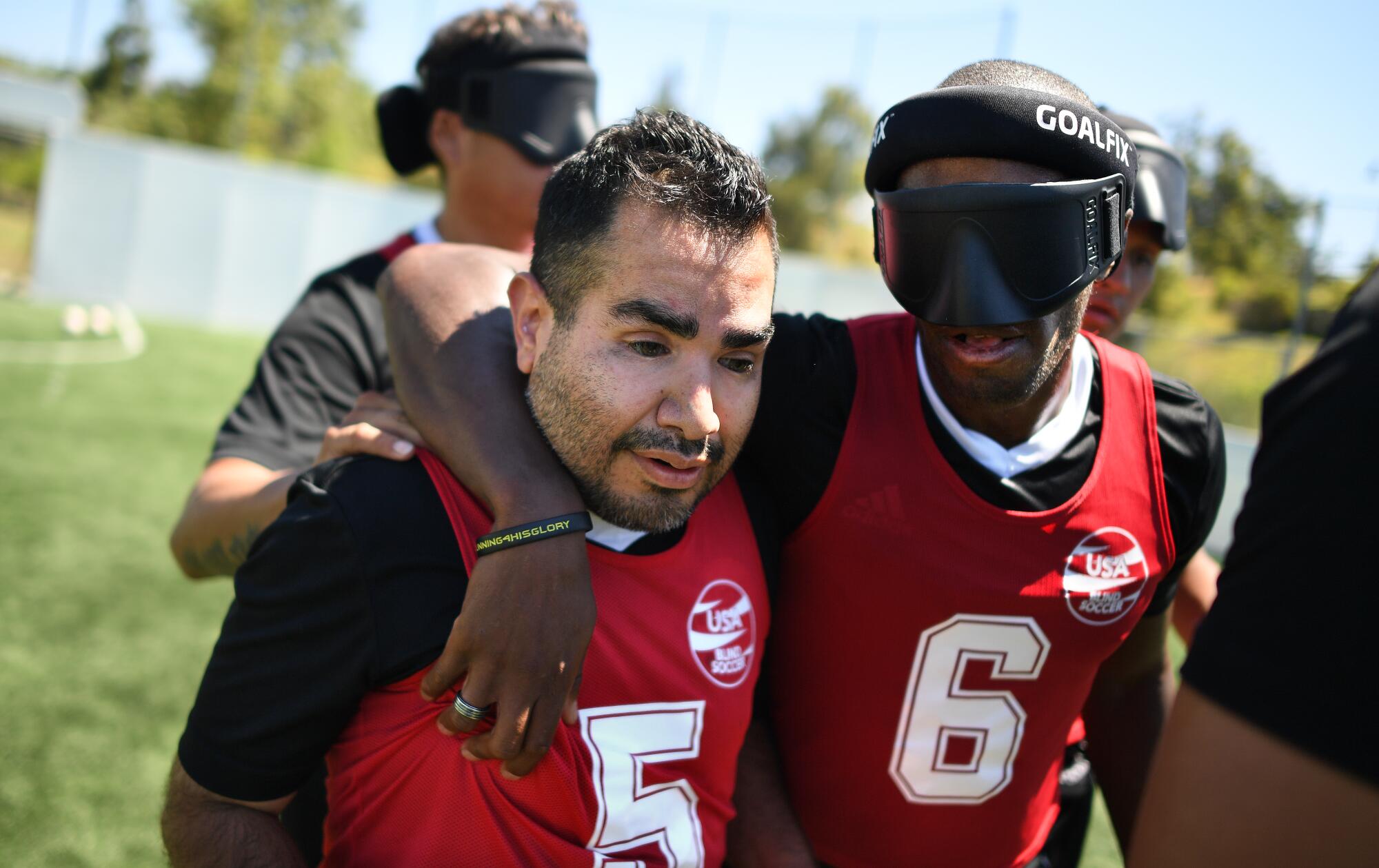
Blind soccer for women is beginning to take hold worldwide, with eight teams qualified for the International Blind Sports Federation World Games in August at the University of Birmingham in England. The U.S. plans to form a team within a year.
“It’s on our horizon, to light that fire with women,” Smith said. “We hope to have a women’s tournament in the Paralympics by 2032 or so.”
The U.S. men’s team had no chance of qualifying for the 16-team BSF World Games tournament in August. Nor will the U.S. compete in the 2024 Paris Paralympics. Growing the sport on U.S. soil comes first.
Smith says she appreciates Brown’s exuberance but her expectations are tempered.
“Our goal is to go into the 2028 Paralympics competing for a medal and competing with Brazil, Japan, Argentina, the top teams,” she said. “The first step is to get ranked. That means playing middle-tier competitors. I do believe we can be competitive with many international teams. As for the top 10, we are not there yet.”
Brown is a former world record and Paralympic record holder in the 100 meters. He’s accustomed to swiftly reaching his destination and can’t wait for the soccer team to compete with the traditional powers.
“I want us to be on the radar of the top teams,” he said. “We should have been ready yesterday.”
Several U.S. players transferred to soccer from goalball, a longstanding Paralympic sport for the visually impaired. Two teams of three players each attempt to roll a basketball-size ball with rattles inside over the opponent’s goal line.
The U.S. women’s goalball team took the silver medal at the Tokyo 2020 Paralympic Games, and the men’s team reeled off six consecutive victories to claim the gold medal at the Nations Cup in Berlin last month. Both U.S. teams have enjoyed sustained success since the 1970s.
Soccer probably has a better chance of catching on with the public because about 20 million people play the game in the U.S., including about 850,000 high school athletes.
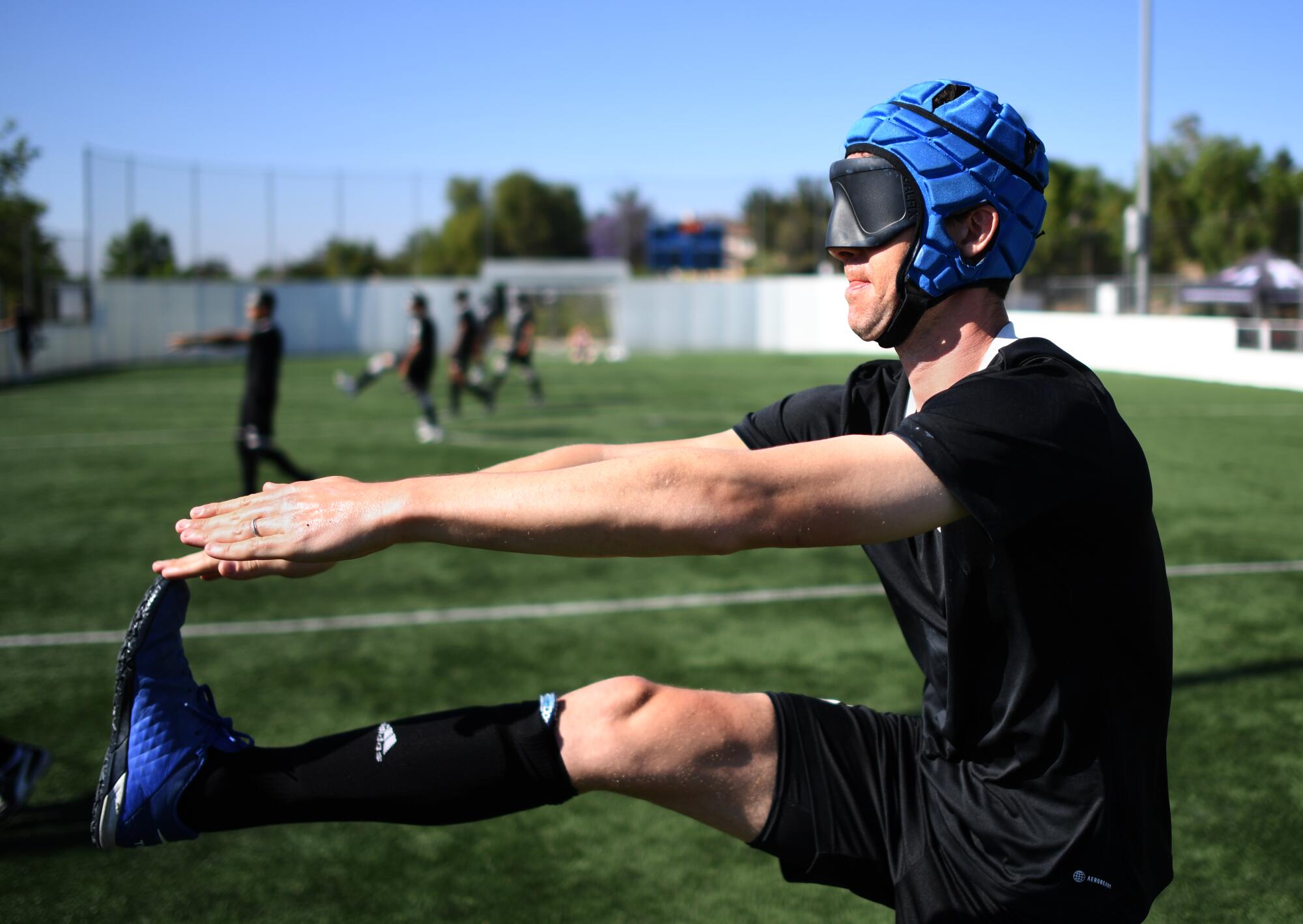
“When we played Canada, everybody understood it’s soccer, the only difference is that the ball rattles and they have to be quiet,” Brown said. “Just to see all the big plays, everybody on edge of their seats, oh, oh, oh, and a breaking play, then yelling from sideline. People can follow it a lot better than goalball.”
Recruiting blind players and teaching them the intricacies of the game also is easier with soccer. The U.S. team is thrilled to bring the game to as many potential participants as possible.
“It is humbling and rewarding to me,” Brown said. “I don’t say that lightly. I’m a world-class track and field athlete and here I am teaching not track and field, but teaching soccer. It’s super crazy thinking that I’m a track guy and now I’m a national level blind soccer player and people are looking at me saying, ‘Hey, how can I get better.’”
Craig, the other elite sprinter turned soccer player, recently was named by the U.S. Assn. of Blind Athletes as one of 16 Sport Ambassadors for 2023. Like Brown, he takes the responsibility seriously.
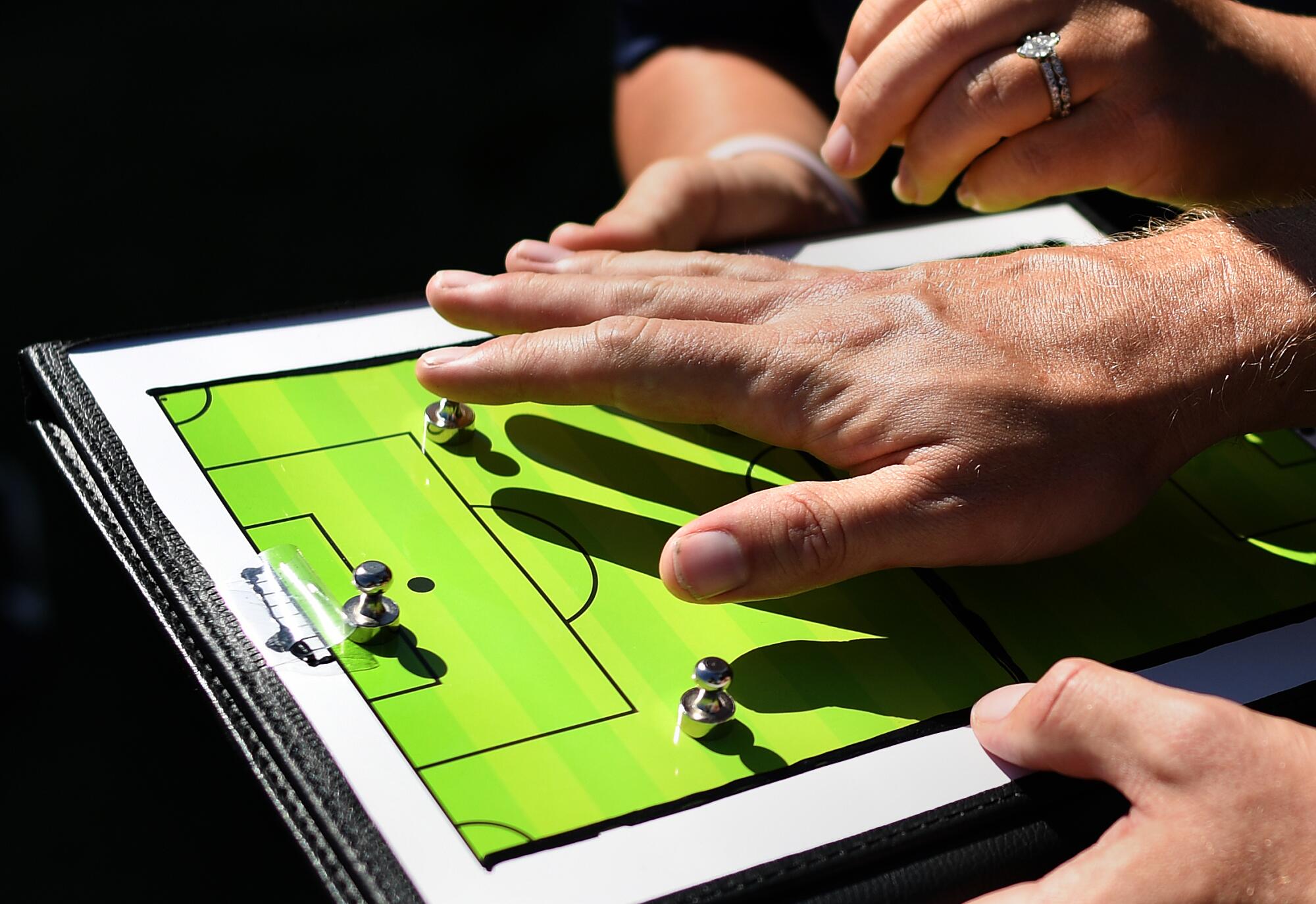
“I’ll go to soccer games and put on clinics during the tailgate,” Craig said. “I bring out a bunch of blindfolds and give everyone the opportunity to dribble, then challenge them to do it with the blindfold on. They ask me questions. They become conscious of spacial awareness.”
And they hear the rattle that has become so familiar to Craig and his teammates, the sound that means it’s time to compete in the beautiful game.
“I let them touch the ball and shake it, then put it on the ground and kick it,” Craig said. “They become in tune with the sound, and they begin to play blind soccer.”
